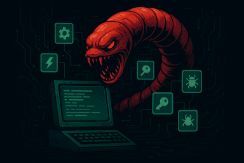Introduction
The cybersecurity landscape continues to evolve, and with it, the tools used by threat actors are becoming more sophisticated. One such example is XWorm 6.0, a modular, memory-resident malware that reflects a growing trend toward stealthy, flexible attack frameworks. Rather than relying on traditional infection methods or bulky payloads, XWorm uses a lightweight core and dynamically loaded plugins to execute targeted malicious actions while minimizing its footprint and avoiding detection.
Architecture: Stealth by Design
XWorm’s core client operates entirely in memory, avoiding disk writes—a common detection points for antivirus tools. It communicates with a remote command-and-control (C2) server to receive encrypted plugin payloads, which are verified using SHA-256 hashes before execution. This modular approach allows attackers to deploy only the tools they need, making the malware more adaptable and harder to detect.
Plugin-Based Threats
XWorm 6.0 contains over 35 plugins designed to perform tasks such as credential harvesting, remote access, and system monitoring. Because these components operate in memory, they leave few forensic traces, making detection more challenging for traditional security tools.
Examples include:
Stealer.dll / Chromium.dll – Extracts browser credentials.
RemoteDesktop.dll – Enables full remote control.
Ransomware.dll – Encrypts files and demands payment.
Webcam.dll – Activates webcams to detect sandbox environments.
FileManager.dll – Provides access to the victim’s file system.
Who’s at Risk?
While XWorm can target any system, certain groups are more vulnerable due to their digital habits or infrastructure limitations:
Users of cracked software – Often infected via fake installers or compromised tools.
Small to mid-sized businesses (SMBs) – Typically lack advanced security infrastructure.
Remote workers – Unmanaged devices outside corporate firewalls are easier to compromise.
High-value industries – Finance, healthcare, and tech are frequent targets due to the sensitive data they manage.
Even threat actors – XWorm has been observed infecting cybercriminals using pirated tools.
Detection and Defense
XWorm’s stealthy, fileless design presents a challenge for traditional security tools. To counter threats like this, defenders must shift toward behavior-based detection and initiative-taking threat hunting.
Recommended strategies:
Behavioral analysis – Monitor for unusual process behavior.
Memory scanning – Use EDR tools to detect injected DLLs.
Network monitoring – Flag encrypted outbound traffic to suspicious domains.
User education – Train users to avoid cracked software and phishing links.
A Glimpse into the Future
XWorm 6.0 reflects a broader shift in malware development toward modularity and adaptability. This trend suggests that attackers are moving toward malware-as-a-service models that can be customized in real-time.
Emerging trends include:
Malware-as-a-Service (MaaS) – Modular frameworks offered to cybercriminals.
AI-driven payload selection – Future malware may adapt based on the target environment.
Fileless attacks – Memory-resident execution is becoming standard.
Cross-platform targeting – Expansion to macOS, Linux, and mobile platforms.
Use of LOLBins – Abuse of legitimate system tools to evade detection.
Conclusion
XWorm 6.0 is a clear example of how cyber threats are evolving. Its modular, memory-resident design makes it harder to detect and easier to customize, posing a serious challenge to traditional security approaches. For defenders, understanding threats like XWorm is essential to building resilient systems and staying ahead of increasingly sophisticated attacks.
Cybersecurity today requires anticipation, not just reaction. Staying informed, investing in advanced detection tools, and educating users are critical steps in defending against threats like XWorm and the next generation of modular malware.

